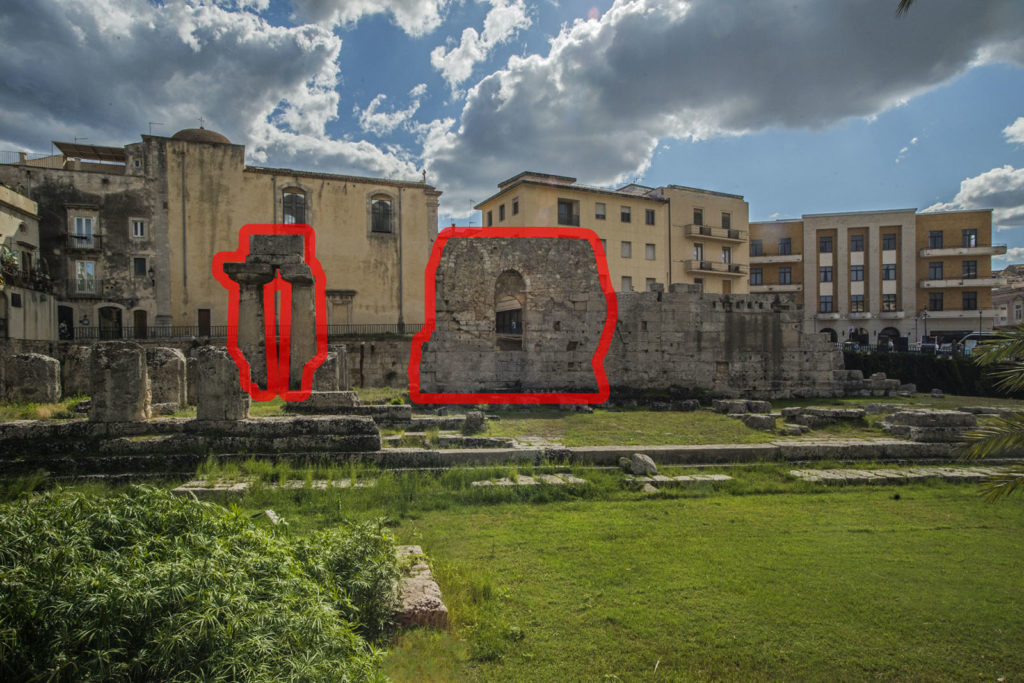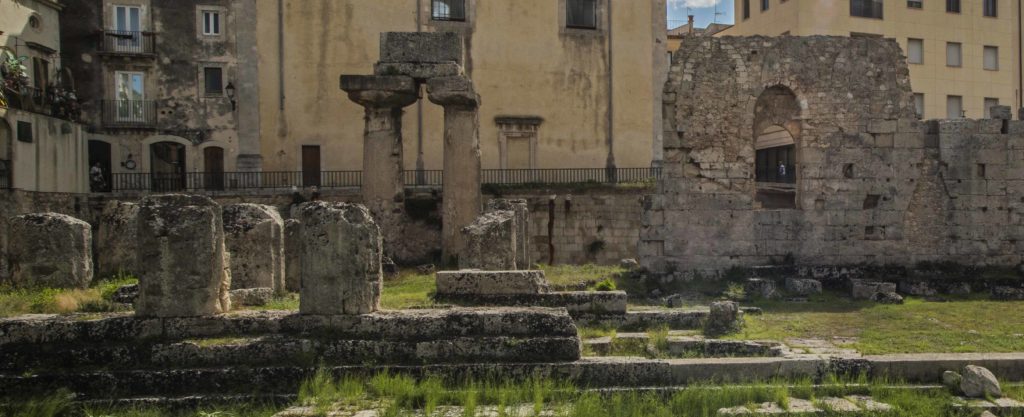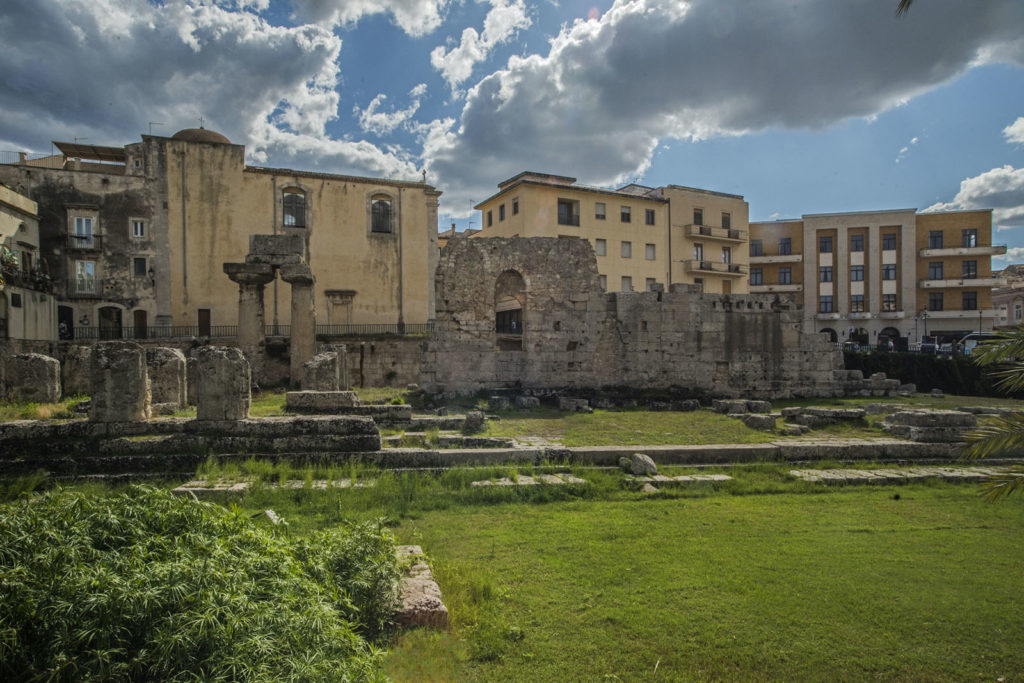At the entrance to the island of Ortygia, the base of two columns and a part of the cella (shrine) form the monumental ruins of the Temple of Apollo, the oldest Doric temple in eastern Sicily.
The building, dating from 565 BC, had a
peristasis

of six columns on the front and seventeen on the long side. Facing east, the building was preceded by a basement of four steps on which there was an engraving in Greek with a dedication to the god Apollo and the names of the temple’s creator and the columns’ builder. The
cella

(shrine), preceded by a vestibule, was divided into three naves by two rows of columns arranged in two levels.
The material used for the construction of the temple is the typical Syracusan limestone called “giuggiulena”. Since importing marble was too expensive, all the temples were built with local limestone, while only the noblest parts, like statues of the gods, were in marble.
The building’s roof was covered with terracotta slabs enriched with decorative motifs of a lively red and blue polychromy.
The rainwater holes were shaped like rosettes. Lastly, the temple’s pediment was decorated with a terrifying
gorgon

head with sharp tusks and a monstrous gaze, placed to guard the temple. A temenos, or enclosure, surrounded the temple, separating the sacred area from the secular space and housed an altar, inside which priests performed
sacrifices

to the gods.
The monument underwent numerous changes over the centuries: it was transformed into a Byzantine church, an Islamic mosque, a Norman church then was finally incorporated into a Spanish barracks.
Only in the 18th century did the birth of modern archaeology restore the ancient Greek place of worship to its original dignity.


